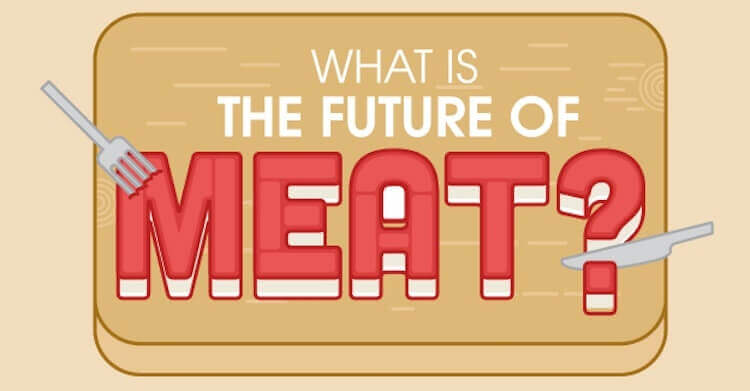Disclaimer: This post was originally published on our UK partner’s site.
The demand for meat is outgrowing our ability to supply meat and has a negative impact upon the environment. At present, 30% of the Earth’s surface is used for livestock production, and an alarming 44% of the world’s grain harvest is diverted to industrialized meat production. Not only that, but the livestock farming industry is responsible for emitting 14.5% of greenhouse gasses into our atmosphere.
With the demand for meat set to rise and not fall, scientists have begun turning their attention to alternative sources of protein. In 2015, a team of Dutch researchers at Maastricht University grew the world’s first burger in a laboratory which – despite costing more than €250,000 to produce – could be cheaper than conventionally farmed beef in the long run. Other scientists have chosen to focus on insect meat as a sustainable protein alternative, with at least 2 billion people worldwide already enjoying insects as part of their diets. Other alternatives include plant-based substitutes to chicken and ground beef and egg whites without the need for hens.
To find out more about the two main contenders – lab grown meat and insect-rich diets – check out our full infographic below.

Sources
Alexandratos, N., Bruinsma, J. (2012). World agriculture towards 2030/2050. the 2012 revision. Rome, Italy.
Anthes, E. (2014). Could insects be the wonder food of the future? bbc.com
Bailey, R., Froggatt, A., Wellesley, L. (2014). Livestock – climate change’s forgotten sector. chathamhouse.org
Cultured Beef. (2015). Facts and FAQs. culturedbeef.net
FAO. (2013). Edible insects: future prospects for food and feed security. fao.org
Ferdman, R, A. (2015). This is the future of meat. washingtonpost.com
Ghosh, F. (2015). Team wants to sell lab grown meat in five years. bbc.co.uk
Mclendon, R. (2013). Insects are our food of the future, U.N. says. mnn.com
Molla, R. (2014). How much meat do Americans eat? Then and now. blogs.wsj.com
National Chicken Council. (2016). Per capita consumption of poultry and livestock, 1965 to estimated 2016, in pounds. nationalchickencouncil.org
Rentokil. (2015). What Are The Benefits of Eating Insects? rentokil.com
Stoll-Kleemann, S., O’Riordan, T. (2015). The sustainability challenges of our meat and dairy diets. environmentmagazine.org
Embed This Image On Your Site (copy code below):






